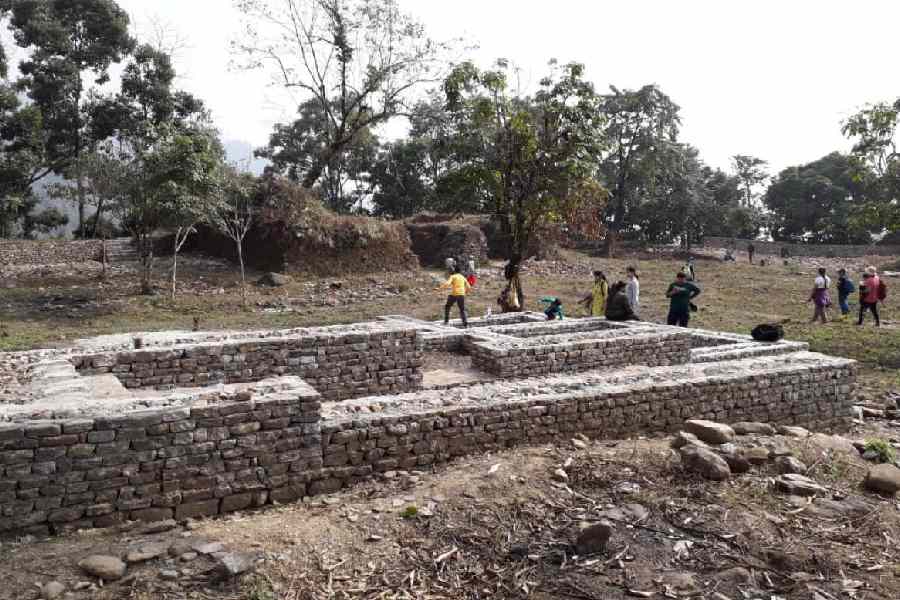The West Bengal Heritage Commission (WBHC) will restore and preserve the Dalim Lepcha Fort, a remnant of the Lepcha dynasty of the Kalimpong hills.
A recent communique by the WBHC said the commission had decided to conserve the fort and carry out necessary restoration work at the site.
“The commission principally agrees to restore and conserve the Dalim Lepcha Fort, consequent upon inspection to be conducted by members of the project committee, followed by submission of detailed feasibility report,” reads the letter that the secretary of the WBHC sent to the chairman of the West Bengal Mayel Lyang Lepcha Development Board on October 30.
The Mamata Banerjee government formed the board in 2012 for the socio-economic development and cultural conservation of the Lepcha community. Kalimpong MLA Ruden Sada Lepcha is the current chairman of the board.
Sources said L.S. Tamsang, a former chairman of the board, had sent a proposal to the government for the restoration of the fort.
The fort is located at an elevation of 322 metres in the Gorubathan block of Kalimpong district and around 30km from Kalimpong town. It is a popular site for ornithologists, birdwatchers and tourists.
The last Lepcha King, Pano Gaeboo Achyok, who was considered one of the most powerful kings of the hills, built the fort in the 18th century.
The Bhutanese army had tried to invade the area several times but the attempts were always thwarted by the king. During one such invasion of the Bhutanese at the Damsang Fort which is nearby, Gaeboo Achyok took shelter at the Dalim Lepcha Fort.
The Bhutanese king then sent an ambassador to the Lepcha king to make a peace treaty. The meeting was held at the Dalim Fort.
At the meeting, the Bhutanese king made Gaeboo Achyok drink plenty of alcohol. While king Achyok got intoxicated, the Bhutanese king beheaded him and tossed his head into the nearby Chel river.
Since then, the Chel river has been known as “Bhutaydaha”. The fort was then occupied by the Bhutanese and it was with them till 1865. After that, the East India Company took over the territory.
In 2018, the WBHC declared the fort a heritage site.
S.P. Sharma, a spokesperson for the Gorkhaland Territorial Administration (GTA), said the decision of the WBHC was significant given the historical importance of the Lepcha diaspora of the Kalimpong hills.
“The initiative to restore and conserve the fort will attract thousands from the Lepcha community who reside across the globe to catch a glimpse of the historical structure. It will also open a new avenue of tourism in the district,” said Sharma.
In Kalimpong, the WBHC has declared some other properties also as heritage sites. They include Chitra Bhanu (an art gallery), the Catherine Graham Memorial Chapel and Gouripur House.
Raj Basu, the chairman of the West Bengal Eco-Tourism Committee, said it had been working on the development of the site and its surrounding areas since 2015.
“We appreciate the state’s decision to recognise the Lepcha heritage. They should adopt a new landscape development approach so that the entire area gets an appropriate heritage look,” Basu said.










